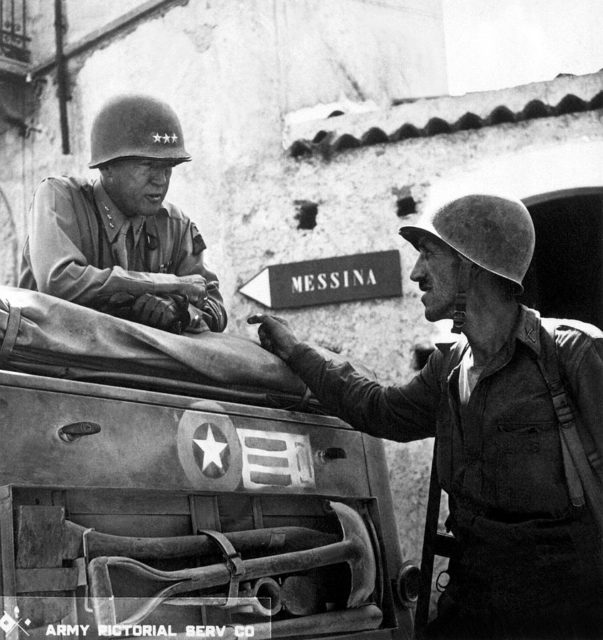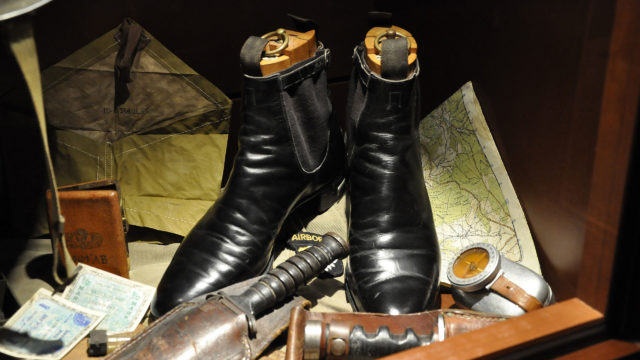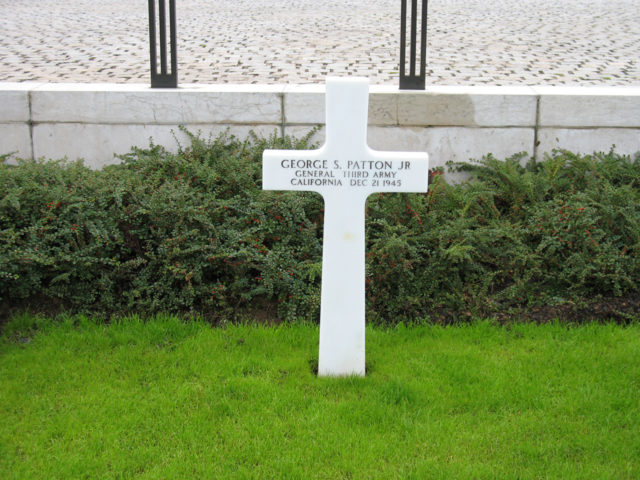General George S. Patton was one of the most flamboyant, brilliant, and troublesome commanders of WWII. He argued with colleagues, offended allies, and assaulted his men. He also led some of the most dramatic and successful tank offensives ever seen.
Early Life
Born in 1885 and raised on tales of heroism, George Patton was inspired by an old-fashioned type of warfare. Trained at the Virginia Military Institute and West Point, he was drawn to the romantic appeal of the cavalry. An expert horseman and skilled swordsman, he represented the USA in the Olympic Pentathlon, demonstrating his physical prowess in many fields.
First World War
In 1916, Patton served under General Pershing in a punitive expedition into Mexico. Having impressed Pershing, he took command of the general’s headquarters staff when they joined WWI in Europe the following year.
There Patton discovered a form of warfare that inspired him even more than mounted combat; tanks. He visited the French tank school, then set up the first US tank unit, and was wounded leading the 304th Tank Brigade in action in September 1918.
Into Africa
Between the World Wars, Patton developed his skills as a tank commander and his reputation as a flamboyant tough guy. When the time came to commit American troops to the North African campaign of WWII, he was a natural choice. Tanks played a prominent role in that theater, and the American people needed the morale boost a charismatic commander like Patton could give.

The Francophile Patton dealt sensitively with the French in North Africa, whose position was made awkward by their homeland’s surrender to Germany. He dealt less kindly with his British allies. Like many American officers in North Africa, he came into conflict with the Brits, developing a personal feud with General Montgomery.
Still, the campaign was a success, Patton rising from command of an armored force to overall command of US troops in Tunisia.
Italy
With North Africa taken, the Allies moved on to invade Sicily. There, Patton’s obsession with out-doing Montgomery, together with his aggressive fighting style, led to swift but costly advances.
The Germans were learning to dread Patton, while American leaders were coming to rely on him.
An Insensitive Spectre
Dealing with the bull-headed Patton had always been difficult for his bosses. It came to a head in Sicily, where he slapped shell-shocked troopers in a field hospital. It was a shocking incident and one that could not go unpunished.
Rather than being court-martialled, Patton was forced to apologize and relieved of command. Even away from the action, he continued to court controversy, upsetting the Russians by talking about Britain and America ruling the world.

The Americans still made use of Patton. In the lead-up to D-Day, they made him the official commander of the First US Army Group, a fictional force designed to distract the Germans. Such was his reputation the Germans were convinced he would be used in the invasion of France, adding to the credibility of his ghost army.
Operation Cobra
In July 1944, Patton returned to real command. Put in charge of the Third Army, he entered the fighting in northern France as part of Operation Cobra, a crucial part of the Allied breakout.
Other forces softened up Axis troops on the west of the lines, allowing Patton to punch through with a characteristically aggressive advance. He swept around the Germans, surrounding them at Falaise, and advanced across France so fast his tanks ran short on fuel.
It was a decisive breakthrough.
The Saar
As the Allies moved east into Germany, Patton and the Third Army were sent to the strategically vital Saar region. This center of German military industry needed to be taken to cripple the Nazis’ ability to fight.
There, Patton proved he was a sophisticated as well as an aggressive commander. Thwarted in his initial attempts to seize the city of Metz, he outflanked it rather than keep on throwing in resources. By the end of 1944, the Saar industrial complex was in ruins.
The Ardennes
On December 16, 1944, the Germans made their last great play. The Ardennes offensive burst unexpectedly through Allied lines, threatening to split the advancing forces.
Patton played a vital role in stopping the German counter-attack. He raced his troops north from the Saar valley to hit the Germans in their southern flank. His 4th Armoured Division traveled 100 miles in 36 hours through difficult terrain and weather to catch the enemy. He relieved Bastogne, one of the focuses of the German advance. His threat to their flank was one of the reasons for the collapse of the offensive.
The Rhine
As the Allies approached the River Rhine, Patton could not resist one last chance to out-do Montgomery.
The British general was due to make the first advance across the Rhine on March 23, 1945. Patton scheduled an attack of his own the night before. It had no strategic significance, merely allowing him to say he had gotten across the Rhine before Montgomery.
Germany was collapsing. As they advanced, the Allies were horrified to discover the brutality of the prison camps. Faced with piles of bodies, Patton forced locals to dig proper graves for the victims and in doing so to confront the evils they had ignored.

Out of Favour at the End
While celebrating the fall of Germany, Patton once again offended the Russians, this time by name calling at a formal dinner. Such an attitude to America’s allies could not be ignored, and he was once again relieved of command.
After taking leave in the USA, he returned to Europe in charge of a force studying the lessons of the war. He again caused offense, making comments about ex-Nazis involved in reconstruction, and was reprimanded.
In December 1945, Patton was in a vehicle collision. Despite appearing to recover, his health suddenly worsened, and he died in Germany on December 21.
Patton had been one of America’s greatest and most awkward commanders. He lived long enough to see the fruits of his successes, with victory in WWII.
Source:
David Rooney (1999), Military Mavericks: Extraordinary Men of Battle.
